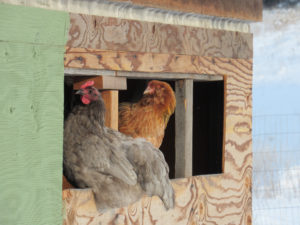Developed in Australia, the AUSTRALORP chicken breed arrived in America in the 1920s. Australorps were recognized as a standard breed by the American Poultry Association in 1929. The name is a combination of “Australian black Orpington.”
In the early 1900s, William Cook’s Orpington chickens were imported to Australia with the goal to create a dual-purpose chicken suitable for the Australian climate. So Cook’s Orpingtons were crossed with Rhode Island Red, Minorca, White Leghorn, Langshan, and possibly Plymouth Rock. The result was a superstar layer!
Egg-laying contests were regularly held in Australia back then. In 1922-23, six Australorp hens laid an average of 309.5 eggs per bird over a 365-day period. The following year, a hen laid 347 eggs in 365 days. According to the Guinness Book of World Records, the current world record stands at 364 eggs in 365 days! And these results were without extra lighting!
As is the case with many heritage breeds, their numbers dwindled with the introduction of hybrid laying breeds. The Livestock Conservancy currently lists it as a “Recovering” breed.
While not as prolific as in the past, today’s Australorp hen will still lay an average of 250 light brown eggs per year, more or less depending on the individual hen, without being coerced.
Australorps come in Black or Blue. Their upright comb has five distinct points; again, watch for frostbite. They are fairly fast-growing. The males weigh 8.5 lbs. and the females weigh 6.5 lbs.
These birds have a calm, quiet, friendly, gentle temperament. Not even the roosters have a mean bone in their bodies! Because they aren’t pushy flockmates, they can be bullied by other breeds that are.
Australorps tolerate confinement well, but like any chicken they thoroughly enjoy free-ranging. However, they aren’t known for being particularly predator-savvy.
They are generally known to be average in broodiness, good nest sitters, as well as good mothers to their chicks.
This bird really is an all-rounder when it comes to climates- doing well in the heat but also cold hardy.

